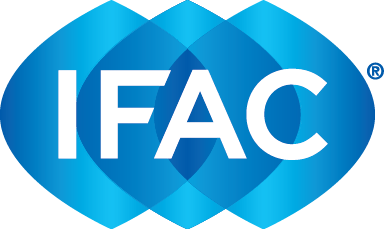Available Languages:
- English
- | Spanish
This may sound odd coming from someone who leads an organisation that is committed to transparency and accountability in public financial management, but we will never completely eradicate corruption. That doesn’t mean we shouldn’t work to limit the opportunities for corruption to happen. We must work to starve it of oxygen.
Corruption hides in the shadows of all local, national and international economies. All markets, organisations and cultures face different levels of exposure to fraud and corruption. Not all of it is intentional – it could come from incompetence, from a lack of understanding regarding internal controls and processes or from promoting family members without proper accountability. But mostly corruption is motivated by two factors: need and greed. These are powerful drivers and can easily influence a person’s behaviour. Corruption then becomes a vicious circle that’s hard to escape – the deeper you become entangled in it, the harder it is to break free.
So how can we turn this circle, which only benefits a few, into a virtuous circle of integrity that benefits everyone? The first step is acknowledging the difficult reality that corruption is everywhere. The next step is prevention. The more time and effort we put into preventing corruption from happening in the first place, the less attractive the environment we create for those seeking to act illegally or irresponsibly.
A good example of an environment where corruption can thrive is when there’s widespread public panic, confusion and desperation. As governments around the world desperately scrambled to procure medicine, PPE and equipment during the COVID-19 pandemic, they often ended up spending millions on questionable contracts. In the name of a national crisis, following agreed-upon procurement procedures often took a back seat to delivering services at a faster pace. Governments were often left with nothing to show for the millions they spent.
Corruption has serious repercussions for the public sector. When public bodies become victims of fraud or neglect, this sets off chains of events such as lengthy investigations and efforts to try and recover lost funds. But these recovery activities use precious resources and taxpayer funding that could otherwise have been diverted into more beneficial areas. A much more cost-effective approach is to prevent corruption from happening in the first place – although this is also no easy task.
In CIPFA’s recently published compendium of global anti-corruption case studies, we break effective prevention down into nine areas to provide practitioners with explanations and best practice examples from around the world. These key areas are culture change, training and mentorship, prevention strategies, corruption risk assessments, conflicts of interest, whistleblowing, investigation, technology and civil society.
This compendium underlines and celebrates the fact that there is an immense amount of positive work being done. All these real-world examples demonstrate initiative, proactivity and creativity in their response to various issues linked to corruption. The compendium forms a cohesive picture of successful international strategies that are being used right now to tackle corruption.
The common thread that runs through each of the nine areas in the compendium is, of course, education. Whether that means being trained on new technology platforms or in how to identify risks and mitigate them, education is our strongest weapon in our fight against corruption. The more we can educate, the more we can prevent.
If education is our first line of defence in preventing corruption, then perhaps our second would be the finance professional. Ensuring accountability, transparency and good governance are the hallmarks of good public financial management will help us shine a light into the shadows where corruption thrives.
The accountancy profession, whether public or private sector, has a front row seat in preventing and investigating corruption. Good financial management builds trust across communities, organisations and governments. With robust governance and assurance frameworks in place, people can have faith that the gaps where corruption can breathe are significantly reduced.
IFAC’s Action plan for fighting corruption and economic crime lays out a good framework for how to enhance the accountancy professions contribution to tackling corruption in all its forms. It acknowledges that while the accountancy profession is a major part of the solution, it cannot be successful on its own. Success will only be achieved with other key partners, such as government agencies, political leaders and public/private sector collaboration. The training and education of an organisation’s staff, from the janitor to the CEO, will also play a vital part in delivering success. It’s important to remember that the fallout from corruption may not always be just financial; it poses a significant reputational risk too.
Next year, CIPFA will be launching its new international qualification in corruption risk assessment. This flagship qualification aims to equip the practitioner with all the skills they need to identify risks and close the gaps that leave their organisations vulnerable to corruption. Prevention, paired with investigation, form the two sides of a very important coin.
By working together and understanding the power of education, we can move a step closer to stamping out corrupt practices. Let’s end the vicious circle that only benefits a few and create a new one that benefits us all.
CIPFA’s free ‘Preventing corruption: A compendium of global case studies’ is available now. |

